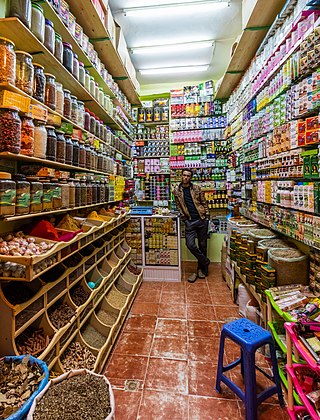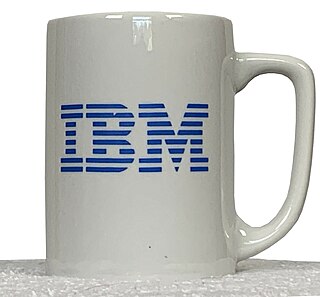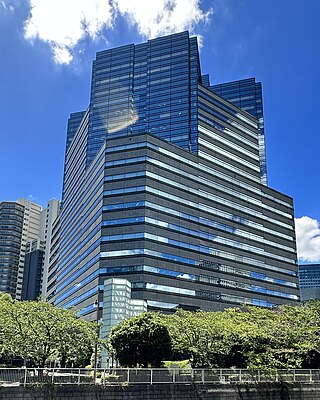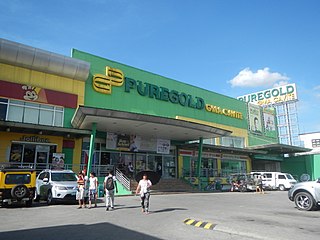
A convenience store, bodega, convenience shop, corner store or corner shop is a small retail store that stocks a range of everyday items such as tea, coffee, groceries, fruits, vegetables, snacks, confectionery, soft drinks, ice creams, tobacco products, lottery tickets, over-the-counter drugs, toiletries, newspapers and magazines. In some jurisdictions, convenience stores are licensed to sell alcoholic drinks, although many jurisdictions limit such beverages to those with relatively low alcohol content, like beer and wine. The stores may also offer money order and wire transfer services, along with the use of a fax machine or photocopier for a small per-copy cost. Some also sell tickets or recharge smart cards, e.g. OPUS cards in Montreal or include a small deli. They differ from general stores and village shops in that they are not in a rural location and are used as a convenient supplement to larger stores.

A supermarket is a self-service shop offering a wide variety of food, beverages and household products, organized into sections. This kind of store is larger and has a wider selection than earlier grocery stores, but is smaller and more limited in the range of merchandise than a hypermarket or big-box market. In everyday United States usage, however, "grocery store" is often used to mean "supermarket".

Shopping is an activity in which a customer browses the available goods or services presented by one or more retailers with the potential intent to purchase a suitable selection of them. A typology of shopper types has been developed by scholars which identifies one group of shoppers as recreational shoppers, that is, those who enjoy shopping and view it as a leisure activity.

Inventory or stock refers to the goods and materials that a business holds for the ultimate goal of resale, production or utilisation.

Retail is the sale of goods and services to consumers, in contrast to wholesaling, which is sale to business or institutional customers. A retailer purchases goods in large quantities from manufacturers, directly or through a wholesaler, and then sells in smaller quantities to consumers for a profit. Retailers are the final link in the supply chain from producers to consumers.

A grocery store (AE), grocery shop (BE) or simply grocery is a foodservice retail store that primarily retails a general range of food products, which may be fresh or packaged. In everyday U.S. usage, however, "grocery store" is a synonym for supermarket, and is not used to refer to other types of stores that sell groceries. In the UK, shops that sell food are distinguished as grocers or grocery shops.

Merchandising is any practice which contributes to the sale of products to a retail consumer. At a retail in-store level, merchandising refers to displaying products that are for sale in a creative way that entices customers to purchase more items or products.

A general merchant store is a rural or small-town store that carries a general line of merchandise. It carries a broad selection of merchandise, sometimes in a small space, where people from the town and surrounding rural areas come to purchase all their general goods. The store carries routine stock and obtains special orders from warehouses. It differs from a convenience store or corner shop in that it will be the main shop for the community rather than a convenient supplement.
Hotelling's law is an observation in economics that in many markets it is rational for producers to make their products as similar as possible. This is also referred to as the principle of minimum differentiation as well as Hotelling's linear city model. The observation was made by Harold Hotelling (1895–1973) in the article "Stability in Competition" in Economic Journal in 1929.

Lawson, Inc. is a convenience store franchise chain in Japan. The store originated in the United States in Cuyahoga Falls, Ohio, but exists today as a Japanese company based in Shinagawa, Tokyo. The company has its headquarters in East Tower of Gate City Ohsaki in Ōsaki, Shinagawa, Tokyo.

The FamilyMart Company, Ltd. is a Japanese convenience store franchise chain. It is Japan's second largest convenience store chain, behind Seven-Eleven Japan. There are now 24,574 stores worldwide in Japan, Taiwan, China, Philippines, Thailand, Vietnam, Indonesia, and Malaysia. Its headquarters is on the 17th floor of the Sunshine 60 building in Ikebukuro, Toshima, Tokyo. There were some stores in Japan with the name Circle K Sunkus under the operation of FamilyMart.

Ministop Co., Ltd., a member of AEON, operates the Ministop convenience store franchise chain in Japan. Unlike most other convenience stores in Japan, Ministop stores feature a kitchen that prepares sandwiches, snacks and take out bento boxes on demand, and has a seating area where customers can sit down and eat immediately.

Woolworths Holdings Limited is a South African multinational retail company that owns Woolworths, a South African luxury department store chain, and Australian retailer Country Road Group. Woolworths, however, has no association to Australia's Woolworths supermarket chain.

Once the strategic plan is in place, retail managers turn to the more managerial aspects of planning. A retail mix is devised for the purpose of coordinating day-to-day tactical decisions. The retail marketing mix typically consists of six broad decision layers including product decisions, place decisions, promotion, price, personnel and presentation. The retail mix is loosely based on the marketing mix, but has been expanded and modified in line with the unique needs of the retail context. A number of scholars have argued for an expanded marketing, mix with the inclusion of two new Ps, namely, Personnel and Presentation since these contribute to the customer's unique retail experience and are the principal basis for retail differentiation. Yet other scholars argue that the Retail Format should be included. The modified retail marketing mix that is most commonly cited in textbooks is often called the 6 Ps of retailing.

In the retail industry, a buyer is an individual who selects what items are stocked and their key responsibility is dealing with all the products that come into the store. Buyers usually work closely with designers and their designated sales representatives and attend trade fairs, wholesale showrooms and fashion shows to observe trends. They are employed by large department stores, chain stores or smaller boutiques. For smaller independent stores, a buyer may participate in sales as well as promotion, whereas in a major fashion store there may be different levels of seniority such as trainee buyers, assistant buyers, senior buyers and buying managers, and buying directors. Decisions about what to stock can greatly affect fashion businesses.

Puregold Price Club, Inc. or simply Puregold is a chain of supermarkets in the Philippines trading goods such as consumer products on a wholesale and retail basis. It currently has approximately more than 400 operating stores and over 20 food service stalls.
Off-price is a trading format based on discount pricing. Off-price retailers are independent of manufacturers and buy large volumes of branded goods directly from them. The off-price retail model relies on the purchase of over-produced, or excess, branded goods at a lower price, thus being able to sell to consumers at a discount compared to other stores which purchased an initial run. Among the largest retailers of this type are TJX Companies and Ross Stores. The model is more common in countries that import fashion-oriented or household goods, as the discount role in producer countries is usually filled by factory outlets or small-scale open-air marketplaces.

Prince Hypermart is a retail store chain in the Philippines with branches in Luzon, Visayas and Mindanao. It is owned by Robert L. Go, the President of the Philippine Retailers Association.

An ukay-ukay, or wagwagan is a Philippine store where secondhand items such as clothes, bags, shoes and other accessories are sold at a cheap price. Items commonly sold at ukay-ukay's are imported from European and North American countries.
The retail format influences the consumer's store choice and addresses the consumer's expectations. At its most basic level, a retail format is a simple marketplace, that is; a location where goods and services are exchanged. In some parts of the world, the retail sector is still dominated by small family-run stores, but large retail chains are increasingly dominating the sector, because they can exert considerable buying power and pass on the savings in the form of lower prices. Many of these large retail chains also produce their own private labels which compete alongside manufacturer brands. Considerable consolidation of retail stores has changed the retail landscape, transferring power away from wholesalers and into the hands of the large retail chains.






















